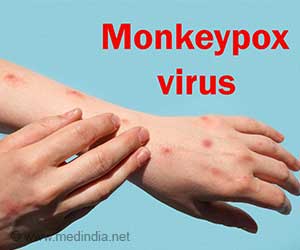A study in JAMA says that one dose of vaccine may be effective to protect infants and children and reduce transmission of the H1N1 virus.
A study in JAMA says that one dose of vaccine may be effective to protect infants and children and reduce transmission of the H1N1 virus. The study will appear in the January 6 print edition of the journal.
Initial reports of 2009 influenza A(H1N1) infection in many countries have largely involved children, especially those attending school. Reports have also indicated high hospitalization rates of children younger than 5 years of age in the current pandemic, according to background information provided by the authors. "The Advisory Committee on Immunization Practices also currently recommends that infants and children aged 9 years or younger receive two doses of H1N1 influenza vaccine at least 21 days apart, based on existing experience with seasonal trivalent influenza vaccines in this age group."Terry Nolan, M.B.B.S., Ph.D., from the University of Melbourne, Australia and colleagues assessed the effectiveness and safety of two doses of a 2009 influenza A(H1N1) vaccine in 370 healthy infants and children ages six-months to less than 9 years living in Australia. The children were randomized into groups that received a two-injection regimen 21 days apart in doses of either 15-micrograms or 30-micrograms of the vaccine.
"Following the first dose of vaccine, antibody titers of 1:40 or greater were observed in 161 of 174 infants and children in the 15-microgram group (92.5 percent) and in 168 of 172 infants and children in the 30 microgram group (97.7 percent)," the authors report. "All participants demonstrated antibody titers of 1:40 or greater after the second vaccine dose," [which means that every child achieved an antibody level considered high enough to protect against the H1N1 virus]. The researchers note that the majority of adverse reactions to the vaccine were mild to moderate in severity. The immune responses to the vaccine were strong regardless of age, baseline antibody status, or whether the child had received a seasonal influenza vaccination prior to this study.
"Our findings suggest that a single dose 15-microgram dose vaccine regimen may be effective and well tolerated in children, and may have positive implications for disease protection and reduced transmission of pandemic H1N1 in the wider population," the authors conclude.(JAMA. 2010; 303[1]:[doi:10.1001/JAMA.2009/1911]. Available pre-embargo to the media at www.jamamedia.org)
Editor's Note: This study was sponsored by CSL Limited with funding from the Australian government's Department of Health and Ageing. Please see the article for additional information, including other authors, author contributions and affiliations, financial disclosures, funding and support, etc.
Editorial: 2009 Influenza A(H1N1) Vaccines for Children
Advertisement
Anthony E. Fiore, M.D., M.P.H., from the National Center for InfectiousDiseases, Centers for Disease Control and Prevention, Atlanta, andKathleen M. Neuzil, M.D., M.P.H., of PATH, Seattle, write that childrenhave been a primary source of illness in community outbreaks of pandemicinfluenza with more severe complications, hospitalizations and deathsfrom this virus than what is usually seen for seasonal influenza.
Advertisement
"The immunogenicity data presented by Nolan et al suggest that at least some children will be protected after a single 15-microgram dose of the H1N1 vaccine used in this study, but the findings cannot be generalized with confidence to all children, epidemiological circumstances in every country, or different vaccine formulations."
In conclusion, the authors write: "… it remains prudent to continue to follow current recommendations for administering two doses to infants and young children while awaiting definitive vaccine effectiveness data."
Source-Eurekalert
RAS









